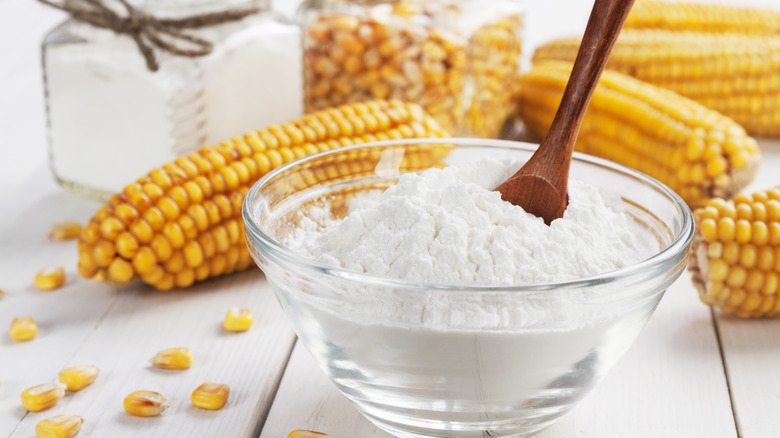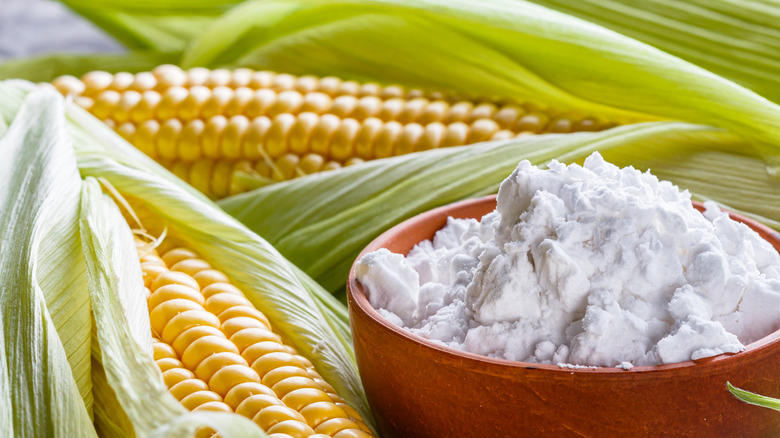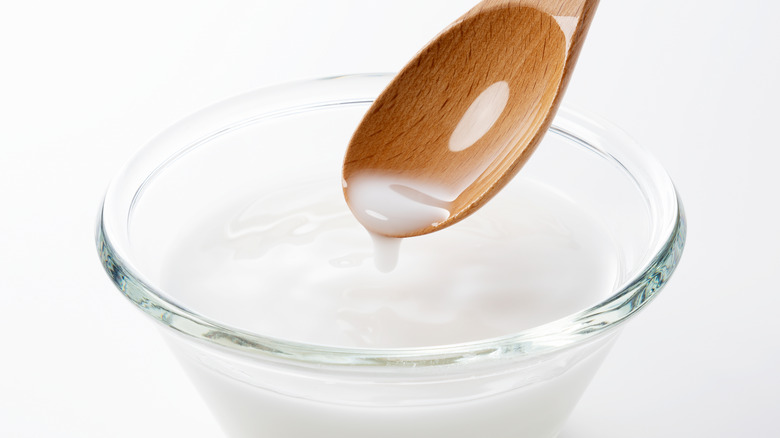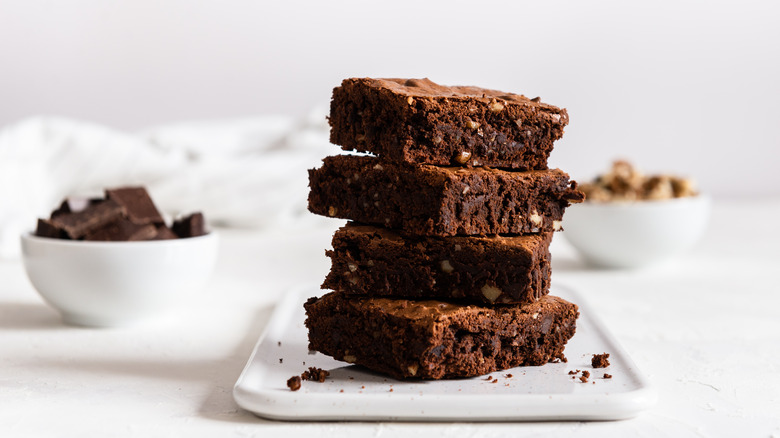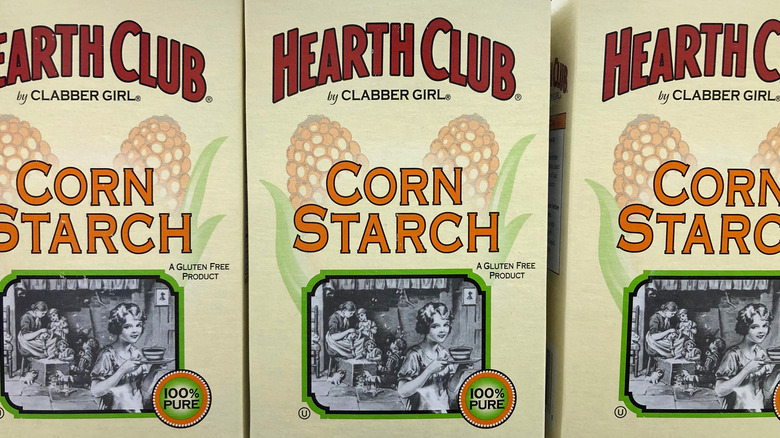What Is Cornstarch And How Do You Use It?
Oftentimes when you are cooking, there will be moments when you will want to thicken a liquid, such as a sauce or stew. But what helps to make a liquid thicker? Reaching for a thickening agent will do the trick, offering a more sought after texture. Cornstarch can be used for a variety of recipes from marinades to soups to sauces and for desserts, such as glazes, custards, or pie fillings. Although there are different starches that act as thickening agents, when it comes to cornstarch, it is quite versatile.
Not only does it help with sauces and liquids, cornstarch is also a good option for creating a more chewy texture with baked goods. If you are wanting to have chewy brownies or cookies, consider reaching for the cornstarch. This is why having a box or packet in the kitchen pantry is useful because this thickening agent has multiple uses.
What is cornstarch?
Cornstarch, sometimes called corn flour, is made from — you guessed it — corn! To be more specific, it's made from corn kernels. The carbohydrates that are found in the endosperm material, or tissue that covers the seed, are dried and then ground into a fine white powder (via Myrecipes). The endosperm is where a lot of nutrients are contained.
However, this starch wasn't initially intended to be used in food. In fact, the inventor, Thomas Kingsford, who worked for a wheat starch factory, created cornstarch while trying to separate endosperms from the corn kernels in 1842, according to Myrecipes. For the first several years, cornstarch was used for laundry, and it wasn't until later that it was bottled and marketed for the kitchen.
Thank goodness, someone realized cornstarch could be used to add to food because it's easy to use, quick, and works wonders without any elaborate appliances or techniques.
What does cornstarch taste like?
Cornstarch doesn't taste like anything, which is good news when it comes to adding it to your recipes. The small quantity that is mixed into your sauce, stew, or marinade will be quickly disguised, so there's no need to mask this thickening agent's taste. But this translucent mixture is only tasteless when used in small amounts and added correctly.
If you use too much cornstarch, it could influence the flavor of your savory dish or sweet dessert, which may have you start all over from scratch. So pay attention to ratios, which are typically equally parts water or liquid to cornstarch, and you won't have much of an issue. You'll also need to be patient for the chemistry of cooking to work its magic for the molecules to thicken the sauce. So if it doesn't happen instantaneously, don't worry, as you just need to give it some time.
How to use cornstarch
Cornstarch is easy to use, but there are some important things to keep in mind. To start, you always want to mix with cold temperature water at a ratio of one to one. For example, if you use one tablespoon of cornstarch you'll blend it with one tablespoon of water. You'll want to create a slurry, which is done by mixing the water and cornstarch together in a bowl or glass, before adding to your recipe (via Myrecipes). Creating a slurry ensures that the mixture gets blended evenly into the dish (via Bob's Red Mill).
Cornstarch can also be a secret ingredient for keeping the moisture in baked goods while also giving them a lighter texture. Blending cornstarch with other flours can make the proteins less rigid, which helps create a lighter and chewier outcome for desserts (via Bob's Red Mill).
One thing you should keep in mind is foods that have cornstarch in them don't freeze well. If you freeze anything with cornstarch the food will turn spongy when thawed. This means that if you made a delicious gravy or marinade, and you have a lot left over, you'll want to rethink your plan of putting it in the freezer to enjoy another time.
Where to buy cornstarch
Cornstarch is easily found in the baking aisle in the grocery store. You can buy it in a box or bag, and even purchase it in bigger quantities if you'll be doing lots of cooking and baking for a lot of people. However, most recipes only need one to two tablespoons, so a box will typically last a while in your pantry.
Many online retailers also sell cornstarch. It is typically only a few dollars, but cost can vary, depending on the brand you choose or if you opt for the store brand. Cornstarch is naturally gluten-free, but it's worth checking the package to ensure it was processed in a place free of wheat ingredients to avoid the chance of any cross-contamination.
It's also worth being aware that cornstarch can come from GMO corn, so if you want to avoid genetically modified products, consider purchasing cornstarch that is organic and certified.
